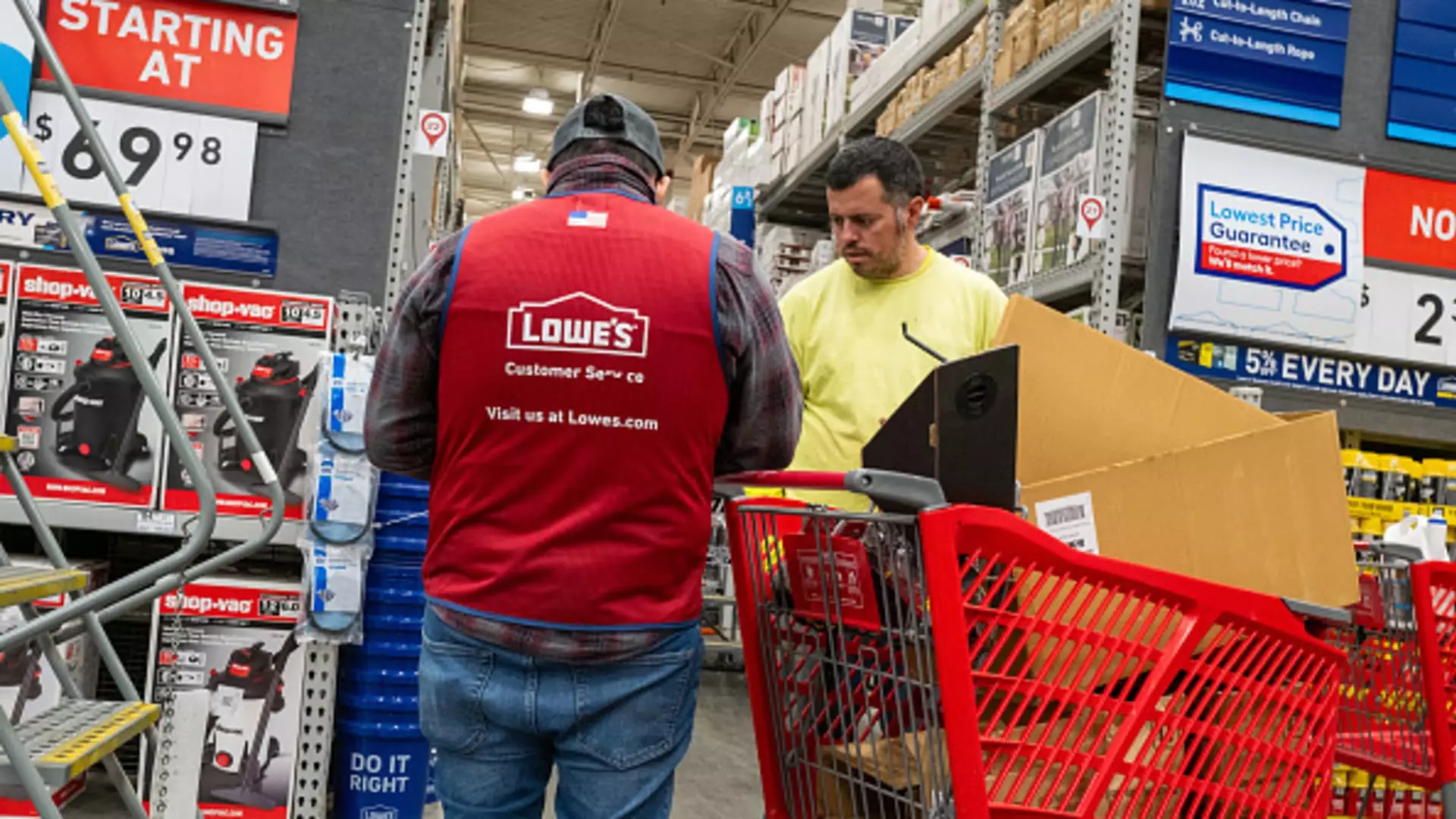Lowe’s recently made the decision to adjust its full-year forecast due to a decline in quarterly sales and the expectation of weak home improvement spending in the latter half of the year. This adjustment includes projecting total sales between $82.7 billion and $83.2 billion for the year, compared to the initial forecast of $84 billion to $85 billion. In addition, the company anticipates a decline in comparable sales of 3.5% to 4%, compared to the previous forecast of 2% to 3%. Adjusted earnings per share are expected to be around $11.70 to $11.90, as opposed to the previous estimate of $12 to $12.30.
In an interview with CNBC, Lowe’s CEO Marvin Ellison mentioned that consumers are currently holding off on making purchases in anticipation of interest rate cuts by the Federal Reserve. He pointed out that inflation remains high and the economic backdrop is placing pressure on shoppers. Homeowners, who make up about 90% of Lowe’s customer base, are hesitant to take on new mortgages or loans for significant home projects due to the prevailing interest rates.
Lowe’s reported its fiscal second quarter results, with adjusted earnings per share of $4.10 versus the expected $3.97 and revenue of $23.59 billion compared to the anticipated $23.91 billion. The company’s net income for the quarter decreased to $2.38 billion, or $4.17 per share, from the previous $2.67 billion, or $4.56 per share. Lowe’s attributed a $43 million pretax gain from the sale of its Canadian retail business for the year, which positively impacted its earnings. However, the company experienced a year-over-year sales decline for the sixth consecutive quarter.
The decline in comparable sales for Lowe’s highlights the challenges the company is facing in the current market. Customers have been taking on fewer discretionary home projects, coupled with unfavorable weather conditions that have affected sales of outdoor and seasonal items. Despite these setbacks, Lowe’s has seen growth in its online business and sales to home professionals. However, the overall economic uncertainty has contributed to a deferral mindset among consumers, impacting the company’s performance.
Looking ahead, Lowe’s CEO is optimistic about the future of the home improvement industry. Factors such as an aging U.S. housing stock, increasing household formations by millennials, and Baby Boomers choosing to renovate their homes instead of moving, all point to a positive outlook for the segment. While there may be a waiting period for the industry to see significant growth, Lowe’s believes it is well-positioned to capture market share when the upturn occurs.
Lowe’s adjustment of its full-year forecast reflects the challenges posed by weak home improvement spending and economic uncertainties. The company’s performance in the recent quarter, with a decline in sales and net income, underscores the impact of these factors. As Lowe’s navigates through the current market conditions, it remains hopeful about the future of the home improvement industry and its ability to capitalize on potential growth opportunities.

